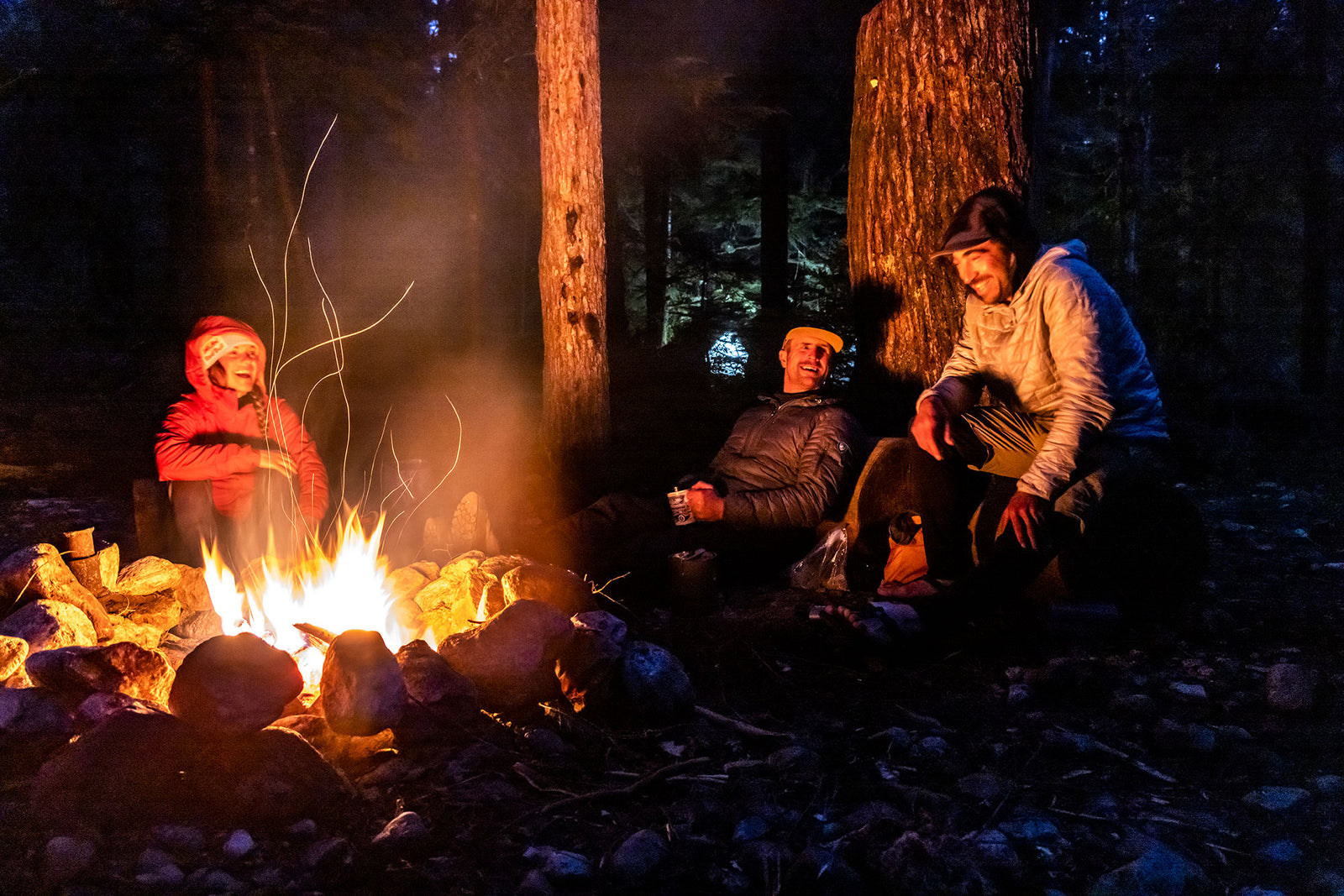The quick guide to fire safety. Or, how not to burn the world down.
With vast swaths of the U.S., Canada, and beyond experiencing drought conditions and no relief in sight, fire danger continues to be on our mind. And it’ll probably stay on our minds, since the problem isn’t going away anytime soon due to the compounding effects of climate change. Currently 63% of the continental United States is experiencing abnormally dry conditions while 47% is experiencing moderate to severe drought conditions. This means that there is a high likelihood that if you recreate outside, you will probably be recreating in an area that is experiencing an increased fire risk. Those of us who recreate in the wild are in a great position to help prevent wildfires, and while we’re out there, we can speak up and inform others. (Normally we keep our noses out of other people’s business, but you know, if untold acres of forest and lives are at stake, we have zero qualms about ruining someone’s stupid bonfire.) Here are a few tips you can keep in mind until, like, benevolent aliens save us from climate change:- Read up on the local fire risk and regulations. Sadly, campfires are banned more and more often these days, with good reason. If there’s a ban in place, be sure to respect it. Gather ‘round the campstove, safely ensconced among rocks, instead.
- If wood fires are permitted, only use the campground’s designated fire ring—and do so with total vigilance. Treat the fire like the high-stakes event that it is. Monitor it at every moment, keep kids, pets, and camp furniture away from it, and make sure there are no drooping tree branches or bushes within a ten-foot radius. Never toss a used match; let it cool and then set it in the fire. And never ever leave the fire unattended. If you have to step away, enlist someone else to tend it. Keep water, a bucket, and shovel on hand so you can immediately respond if something flares out of control.
- Subdue your inner pyro. Keep your fire small and manageable. There’s no need to build a bonfire visible from space amid these times of drought and danger.
- Put it out, all the way, plus extra water for good measure. Even if you think you’ve put your fire out, go ahead and put it more out. Really douse that sucker with water, and stir the smoldering wood around to make sure you get it all. If there’s even one ember left, it’s still too hot. Add dirt, water, or sand and stir till there’s not one wisp of smoke or steam left.
- Minimize Campfire Impacts. Leave No Trace has many great tips on how to minimize campfire impacts, and a handy checklist to help you make the decision on if it is safe to build a fire. To read our breakdown of leave no trace principles go here and here.
- Cars, trucks, ATVs, and motorcycles: If a hot exhaust pipe touches dry grass or brush, a fire can very quickly ignite. This would be an easy, innocent error to make if you’re simply looking for a parking spot or trying to pull over. The fire could flare out of control before you’ve even noticed. If chains are dragging from your vehicle or trailer hitch, they’ll throw sparks too. You also want to stay on top of the air pressure in your tires, as exposed rims get hot and can spark. Same with your brake pads; if they’ve worn down to metal on metal, you can spark a fire simply by braking. Sparks from a car tailpipe ignited a roadside wildfire here in Utah this summer and came close to burning down multiple entire neighborhoods. The risk is real.
- Fireworks: This should be a no-brainer, and many western cities banned fireworks or banned them in certain areas this summer, but overenthusiastic people still get ahold of them and set them off in dry, brushy places. The results can be catastrophic.
- Cigarettes: Treat any cigarette butt or joint like the fire-igniting atom bomb it is. Soak it in water, then dispose of it in a safe bin or carry it out, safely contained, with you.
- Shooting guns: Another no-brainer, but a hot, dry, windy summer day is sure a bad time for target practice. A police officer visiting his local target range set off a massive forest fire that killed 3,000 acres of plants and animals here in Utah last year. It’s a pretty convincing argument that summer is a better time for visiting an indoor shooting range than an outdoor one.

Beth Lopez is a seasoned writer and creative director who loves to tell tales of adventure and discovery—and finds writing a powerful way to give a voice to people, causes, and places. Beth runs amok in the Wasatch mountains when untethered from her computer. She believes there’s no such thing as a bad ski day and considers animals her favorite people. Don’t tell her mother about her Instagram mountaineering photos.



